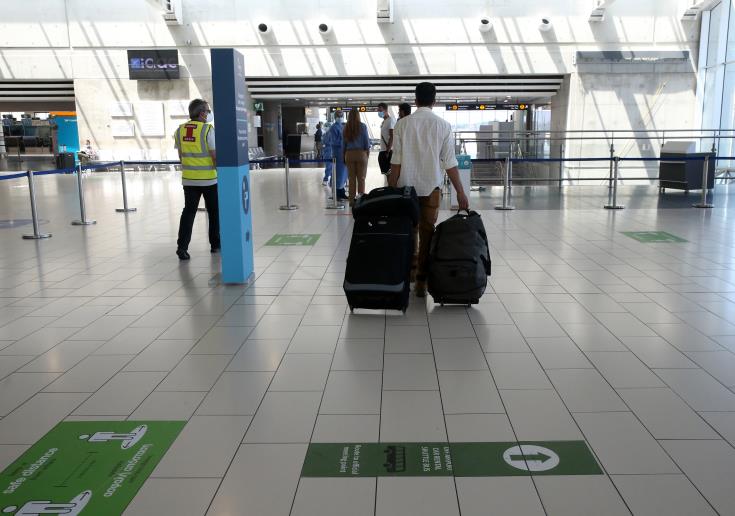Worsening epidemiological data across Europe has meant no upgrades on Cyprus’ COVID-19 safe travel list, leaving most EU countries in the high-risk red zone.
The Health Ministry’s latest travel assessment sees its red category widen as, in its only change on the list, France was demoted to red from orange.
That puts 21 of the EU27 in the high-risk category where a COVID test is needed before departure and after arrival in Cyprus.
The green category has just four countries from the Middle East, namely the UAE, Kuwait, Bahrain, and Saudi Arabia.
There are 22 countries in the orange category where a negative test is needed before departure to Cyprus; just six are EU members.
The travel changes come into effect on Thursday, 25 November.
The island bases its weekly epidemiological risk report on the equivalent list issued by the European Centre for Disease Control (ECDC).
Cyprus is in the ECDC’s high-risk red category, which most EU members use to their safe travel lists.
The island is witnessing a resurgence of COVID-19 cases, reporting 491 new cases on Monday, the highest since August.
Health authorities had contained an outbreak peaking at 1,152 cases in mid-July, only to spiral close to 500 in November.
Cyprus has confirmed over 130,500 infections and 590 deaths since March 2020.
Under the colour-coded system, there is no mandatory quarantine for tourists entering Cyprus from the EU.
Cyprus also keeps its doors open to fully vaccinated tourists to boost arrivals that plunged 84.1% last year, regardless of their country of origin.
Tourists allowed unconditional entry must have a COVID-19 vaccine approved by the European Medicines Agency (EMA) — Pfizer/BioNTech, AstraZeneca, Moderna or Janssen.
Russia’s SputnikV and China’s Sinopharm are also accepted vaccines by Cyprus.
Regardless of category, unvaccinated tourists staying for more than a week must get tested on the seventh day of their holiday.
GREEN
Under the COVID assessment scheme, low-risk countries currently classified in the green category are:
- Third Countries: United Arab Emirates, Kuwait, Bahrain, Saudi Arabia
ORANGE
Orange countries are those of higher risk than green.
Passengers must have undergone a PCR laboratory test within 72 hours before departure and have a certificate proving they tested negative for the virus.
- European Union: Greece, Spain, Italy, Malta, Portugal
- Small States: Vatican City
- Third Countries: Argentina, Australia, Japan, Israel, Canada, Qatar, China (including Hong Kong and Macau), Colombia, Namibia, New Zealand, South Korea, Uruguay, Rwanda, Chile
RED
This category includes countries of higher risk than orange.
Passengers coming from red category countries are required: a) to prove a negative PCR test carried out under 72 hours before departure, and b) undergo another PCR test upon arrival in Cyprus. The cost of the test is charged to the individual.
- European Union: Austria, Belgium, Bulgaria, France, Germany, Denmark, Estonia, Ireland, Croatia, Latvia, Lithuania, Luxembourg, the Netherlands, Hungary, Poland, Romania, Slovakia, Slovenia, Sweden, Czech Republic, Finland
- Small states: Andorra, Monaco, San Marino
- Schengen Area: Switzerland, Iceland, Liechtenstein, Norway
- Third Countries: Egypt, Armenia, Georgia, United States of America, United Kingdom, Jordan, Belarus, Lebanon, Oman, Ukraine, Peru, Russia, Serbia
GREY
All the rest. Arrivals are allowed entry after acquiring special permission, only if they are Cypriot citizens or entitled to enter, such as people with a work permit.
Passengers must undergo a coronavirus test under 72 hours before their trip and have a certificate they tested negative for Covid-19.
Grey category passengers must remain in self-isolation for 14 days or seven if they choose to carry out another coronavirus PCR test with a negative result on the seventh day.










